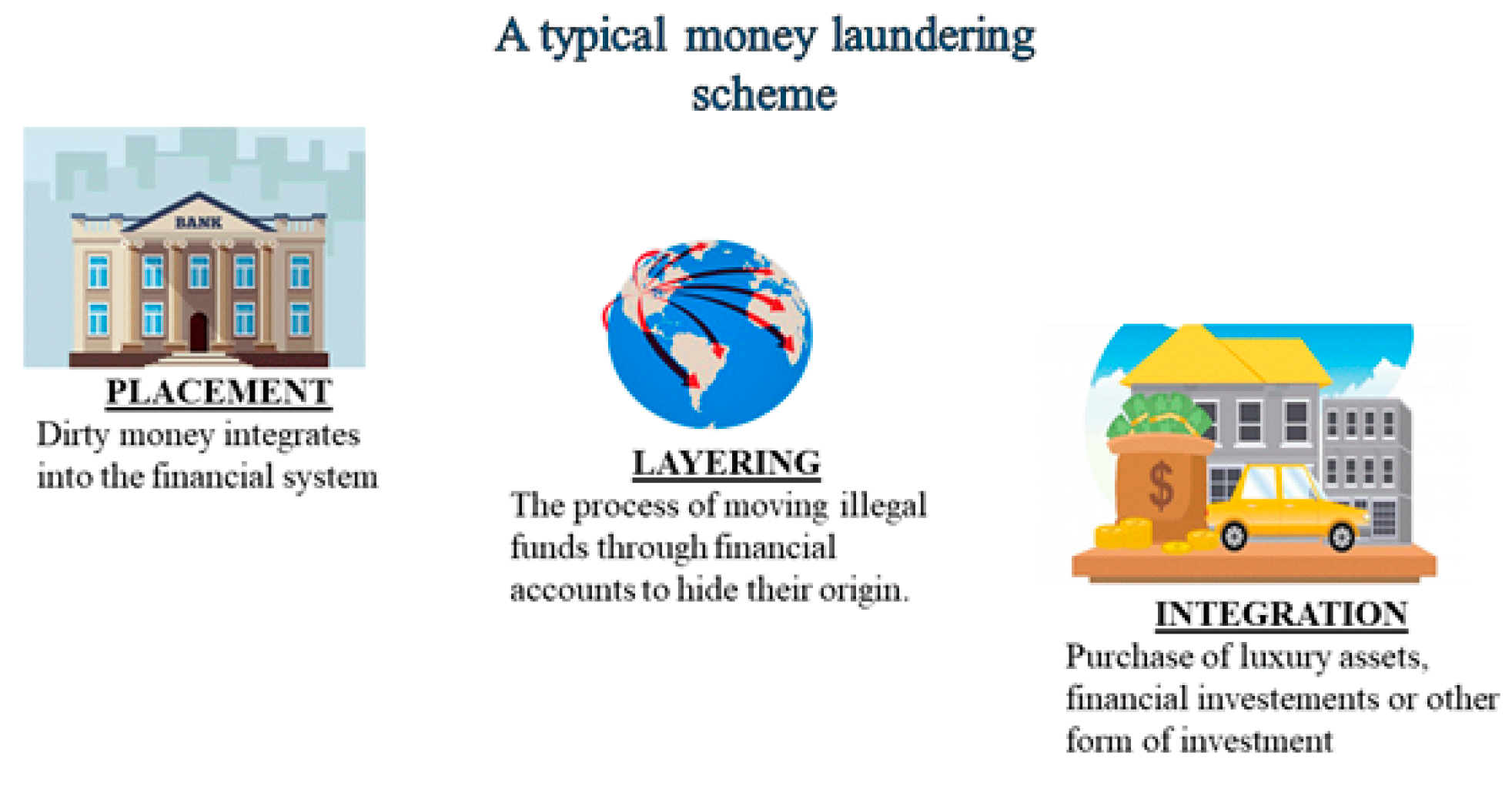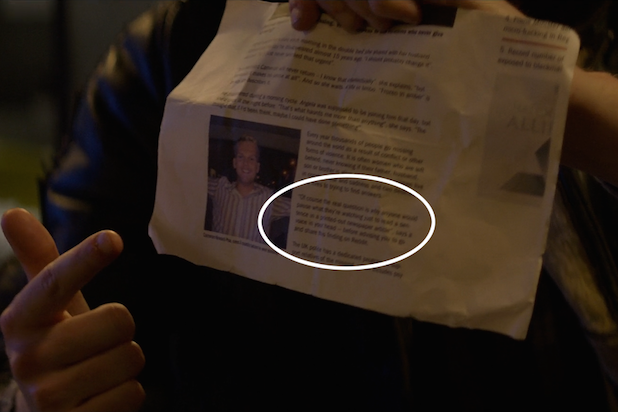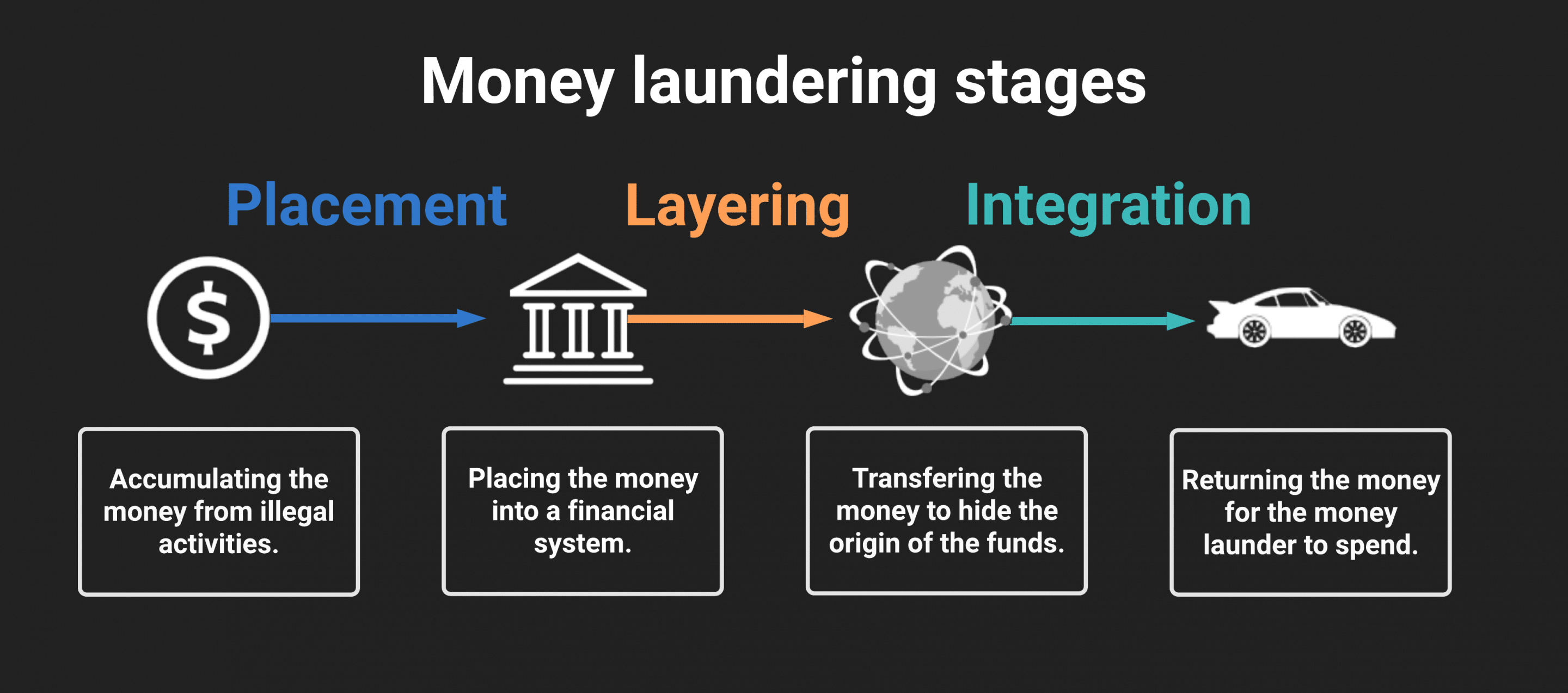Your Eu money laundering directive history images are ready in this website. Eu money laundering directive history are a topic that is being searched for and liked by netizens now. You can Download the Eu money laundering directive history files here. Find and Download all free vectors.
If you’re searching for eu money laundering directive history images information linked to the eu money laundering directive history keyword, you have come to the right site. Our site frequently gives you suggestions for viewing the maximum quality video and image content, please kindly search and find more enlightening video content and graphics that match your interests.
Eu Money Laundering Directive History. The 6th Anti-Money Laundering Directive 6AMLD came into effect for all EU member states on 3 December 2020 and must be implemented by regulated businesses by 3 June 2021. Directive EU 20181673 of the European Parliament and of the Council of 23 October 2018 on combating money laundering by criminal law PE302018REV1 OJ L 284 12112018 p. As of December 3rd 2020 the European Unions Sixth Anti-Money Laundering Directive AMLD6 is in effect for all member states. Regulated entities operating in the union will need to be compliant by June 3 2021.
 European Flag European Commission Brussels 26 6 2017 Swd 2017 241 Final Commission Staff Working Document Accompanying The Document Report From The Commission To The European Parliament And The Council On The Assessment Of From eur-lex.europa.eu
European Flag European Commission Brussels 26 6 2017 Swd 2017 241 Final Commission Staff Working Document Accompanying The Document Report From The Commission To The European Parliament And The Council On The Assessment Of From eur-lex.europa.eu
The European anti-money laundering directives AMLD are intended to prevent money laundering or terrorist financing and establish a consistent regulatory environment across the EU. The application of AML rules has suffered from a lack of sufficient detail at EU level. This directive brought the EUs money laundering laws more in line with the USs which is advantageous for financial institutions operating in both jurisdictions. The escalation in money laundering and terrorist financing has led to heightened awareness of the potential effects of money laundering. It provides that obliged entities shall apply customer due diligence requirements when entering into a business relationship ie. It was first published on June 19th 2018 in the Official Journal of the European Union as an iteration of the 4th Anti-Money Laundering Directive AMLD4.
EU anti money laundering directives are issued periodically by the European Parliament to be implemented by member states as part of domestic legislation.
The European anti-money laundering directives AMLD are intended to prevent money laundering or terrorist financing and establish a consistent regulatory environment across the EU. 41 History of the European Union Anti-Money Laundering and Financing of Terrorism Directives. The application of AML rules has suffered from a lack of sufficient detail at EU level. 1AMLDs primary focus was drugs-related offences and it introduced requirements for credit and financial institutions to verify the identity of their customers and report any suspicions of money laundering. The first Money Laundering Directive 1AMLD was enacted by the European Union EU in 1991. Its primary aim was to check drug-related offenses and it also implemented requirements for financial institutions to verify their customers identities and report any suspicious financial activity.
Source:
An action plan setting out the need for reform was adopted by the Commission in May last year as dirty money has continued to flow. Identify and verify the identity of clients monitor transactions and report suspicious transactions. 2230 BG ES CS DA DE ET EL EN FR GA HR IT LV LT HU MT NL PL PT RO SK SL FI SV. The new package arrives three decades after the blocs first AML directive. Regulated entities operating in the union will need to be compliant by June 3 2021.
 Source: tookitaki.ai
Source: tookitaki.ai
This captured all UK trusts that are not considered dormant as well as non-UK trusts with a UK tax liability. Regulated entities operating in the union will need to be compliant by June 3 2021. The fourth EU Money Laundering Directive required all UK express trusts in existence on 6 April 2016 with a UK tax consequence to register with HMRC by 31 January 2018. The first-ever Money Laundering Directive 1AMLD was drafted and enacted by the EU in 1991. This directive brought the EUs money laundering laws more in line with the USs which is advantageous for financial institutions operating in both jurisdictions.
 Source: pinterest.com
Source: pinterest.com
Its primary aim was to check drug-related offenses and it also implemented requirements for financial institutions to verify their customers identities and report any suspicious financial activity. Identify and verify the identity of clients monitor transactions and report suspicious transactions. The application of AML rules has suffered from a lack of sufficient detail at EU level. The escalation in money laundering and terrorist financing has led to heightened awareness of the potential effects of money laundering. The AMLA Amendment imposes important changes in the areas of obligated parties customer care obligations transparency register and other aspects such as among others an obligation to register without exception.
 Source: tookitaki.ai
Source: tookitaki.ai
The 6th Anti-Money Laundering Directive 6AMLD came into effect for all EU member states on 3 December 2020 and must be implemented by regulated businesses by 3 June 2021. The new package arrives three decades after the blocs first AML directive. The application of AML rules has suffered from a lack of sufficient detail at EU level. Regulated entities operating in the union will need to be compliant by June 3 2021. The European anti-money laundering directives AMLD are intended to prevent money laundering or terrorist financing and establish a consistent regulatory environment across the EU.
 Source: br.pinterest.com
Source: br.pinterest.com
The fourth money laundering directive means Directive 2015849EU of the European Parliament and of the Council of 20th May 2015 on the prevention of the use of the financial system for the purposes of money laundering or terrorist financing as amended by Directive 2018843 of the European Parliament and of the Council of 30th May 2018. The escalation in money laundering and terrorist financing has led to heightened awareness of the potential effects of money laundering. The first Money Laundering Directive 1AMLD was enacted by the European Union EU in 1991. It follows on from the 4th and 5th MLDs and seeks to close certain loopholes in the EU Member States domestic legislation by harmonising the definition of money laundering. Directive EU 2015849 of the European Parliament and of the Council of 20 May 2015 on the prevention of the use of the financial system for the purposes of money laundering or terrorist financing amending Regulation EU No 6482012 of the European Parliament and of the Council and repealing Directive 200560EC of the European Parliament and of the Council and Commission Directive.
 Source: id.pinterest.com
Source: id.pinterest.com
The fourth EU Money Laundering Directive required all UK express trusts in existence on 6 April 2016 with a UK tax consequence to register with HMRC by 31 January 2018. 1AMLDs primary focus was drugs-related offences and it introduced requirements for credit and financial institutions to verify the identity of their customers and report any suspicions of money laundering. The fourth iteration of the EUs anti-money laundering directive AMLD IV was published on 5 June 2015 after clearing its last legislative stop at the European Parliament. The European anti-money laundering directives AMLD are intended to prevent money laundering or terrorist financing and establish a consistent regulatory environment across the EU. Like its predecessor this new directive is aimed to strengthen anti-money laundering AML rules in the union and place larger.
 Source: pinterest.com
Source: pinterest.com
It provides that obliged entities shall apply customer due diligence requirements when entering into a business relationship ie. The law implementing the Fifth EU Money Laundering Directive came into force on 1 January 2020. The fourth EU Money Laundering Directive required all UK express trusts in existence on 6 April 2016 with a UK tax consequence to register with HMRC by 31 January 2018. Regulated entities operating in the union will need to be compliant by June 3 2021. The fourth iteration of the EUs anti-money laundering directive AMLD IV was published on 5 June 2015 after clearing its last legislative stop at the European Parliament.
 Source: researchgate.net
Source: researchgate.net
41 History of the European Union Anti-Money Laundering and Financing of Terrorism Directives. The fourth money laundering directive means Directive 2015849EU of the European Parliament and of the Council of 20th May 2015 on the prevention of the use of the financial system for the purposes of money laundering or terrorist financing as amended by Directive 2018843 of the European Parliament and of the Council of 30th May 2018. The 1st EU AML Directive addressed and defined the threat of money laundering in terms of drug offences and imposed obligations solely on the financial sector 1991 The 2nd EU AML Directive extended the scope in terms of crimes covered not only drug offences and in terms of professions and activities covered not only financial sector 2001. Identify and verify the identity of clients monitor transactions and report suspicious transactions. 2230 BG ES CS DA DE ET EL EN FR GA HR IT LV LT HU MT NL PL PT RO SK SL FI SV.
 Source: in.pinterest.com
Source: in.pinterest.com
The fourth EU Money Laundering Directive required all UK express trusts in existence on 6 April 2016 with a UK tax consequence to register with HMRC by 31 January 2018. EU anti money laundering directives are issued periodically by the European Parliament to be implemented by member states as part of domestic legislation. The application of AML rules has suffered from a lack of sufficient detail at EU level. The fourth money laundering directive means Directive 2015849EU of the European Parliament and of the Council of 20th May 2015 on the prevention of the use of the financial system for the purposes of money laundering or terrorist financing as amended by Directive 2018843 of the European Parliament and of the Council of 30th May 2018. It provides that obliged entities shall apply customer due diligence requirements when entering into a business relationship ie.
 Source: eur-lex.europa.eu
Source: eur-lex.europa.eu
The new package arrives three decades after the blocs first AML directive. Identify and verify the identity of clients monitor transactions and report suspicious transactions. The 1st EU AML Directive addressed and defined the threat of money laundering in terms of drug offences and imposed obligations solely on the financial sector 1991 The 2nd EU AML Directive extended the scope in terms of crimes covered not only drug offences and in terms of professions and activities covered not only financial sector 2001. EU anti money laundering directives are issued periodically by the European Parliament to be implemented by member states as part of domestic legislation. 2230 BG ES CS DA DE ET EL EN FR GA HR IT LV LT HU MT NL PL PT RO SK SL FI SV.
 Source: pinterest.com
Source: pinterest.com
On 20 July 2021 the European Commission presented an ambitious package of legislative proposals to strengthen the EUs anti-money laundering and countering the financing of terrorism AMLCFT rules. The application of AML rules has suffered from a lack of sufficient detail at EU level. The first Money Laundering Directive 1AMLD was enacted by the European Union EU in 1991. The first-ever Money Laundering Directive 1AMLD was drafted and enacted by the EU in 1991. Directive EU 20181673 of the European Parliament and of the Council of 23 October 2018 on combating money laundering by criminal law PE302018REV1 OJ L 284 12112018 p.
 Source: mdpi.com
Source: mdpi.com
The fourth money laundering directive means Directive 2015849EU of the European Parliament and of the Council of 20th May 2015 on the prevention of the use of the financial system for the purposes of money laundering or terrorist financing as amended by Directive 2018843 of the European Parliament and of the Council of 30th May 2018. The first Money Laundering Directive 1AMLD was enacted by the European Union EU in 1991. The European Union adopted the first anti-money laundering Directive in 1990 in order to prevent the misuse of the financial system for the purpose of money laundering. Its primary aim was to check drug-related offenses and it also implemented requirements for financial institutions to verify their customers identities and report any suspicious financial activity. This captured all UK trusts that are not considered dormant as well as non-UK trusts with a UK tax liability.
 Source: in.pinterest.com
Source: in.pinterest.com
Like its predecessor this new directive is aimed to strengthen anti-money laundering AML rules in the union and place larger. The AMLA Amendment imposes important changes in the areas of obligated parties customer care obligations transparency register and other aspects such as among others an obligation to register without exception. The fourth money laundering directive means Directive 2015849EU of the European Parliament and of the Council of 20th May 2015 on the prevention of the use of the financial system for the purposes of money laundering or terrorist financing as amended by Directive 2018843 of the European Parliament and of the Council of 30th May 2018. Directive EU 2015849 of the European Parliament and of the Council of 20 May 2015 on the prevention of the use of the financial system for the purposes of money laundering or terrorist financing amending Regulation EU No 6482012 of the European Parliament and of the Council and repealing Directive 200560EC of the European Parliament and of the Council and Commission Directive. The package also includes a proposal for the creation of a new EU authority to fight money laundering.
This site is an open community for users to do sharing their favorite wallpapers on the internet, all images or pictures in this website are for personal wallpaper use only, it is stricly prohibited to use this wallpaper for commercial purposes, if you are the author and find this image is shared without your permission, please kindly raise a DMCA report to Us.
If you find this site value, please support us by sharing this posts to your preference social media accounts like Facebook, Instagram and so on or you can also save this blog page with the title eu money laundering directive history by using Ctrl + D for devices a laptop with a Windows operating system or Command + D for laptops with an Apple operating system. If you use a smartphone, you can also use the drawer menu of the browser you are using. Whether it’s a Windows, Mac, iOS or Android operating system, you will still be able to bookmark this website.






